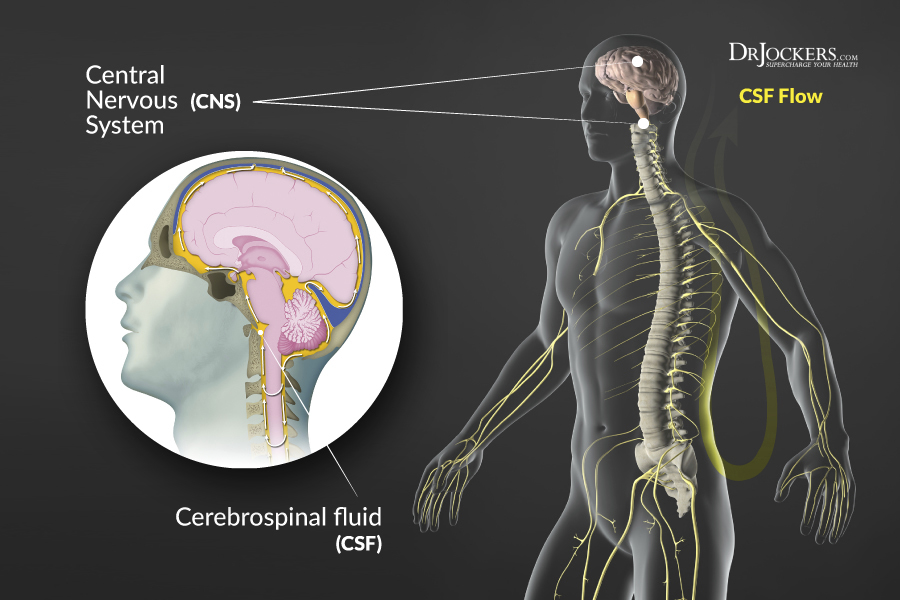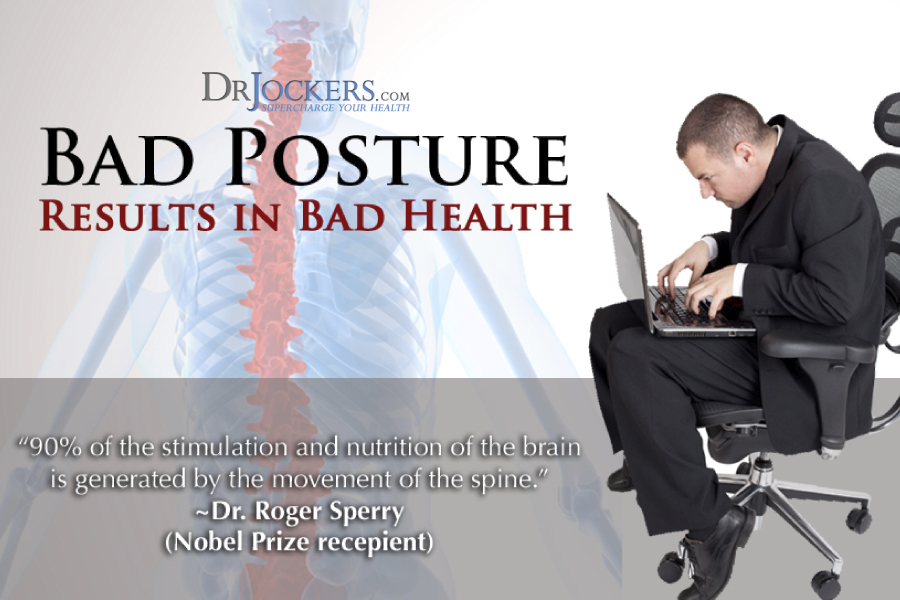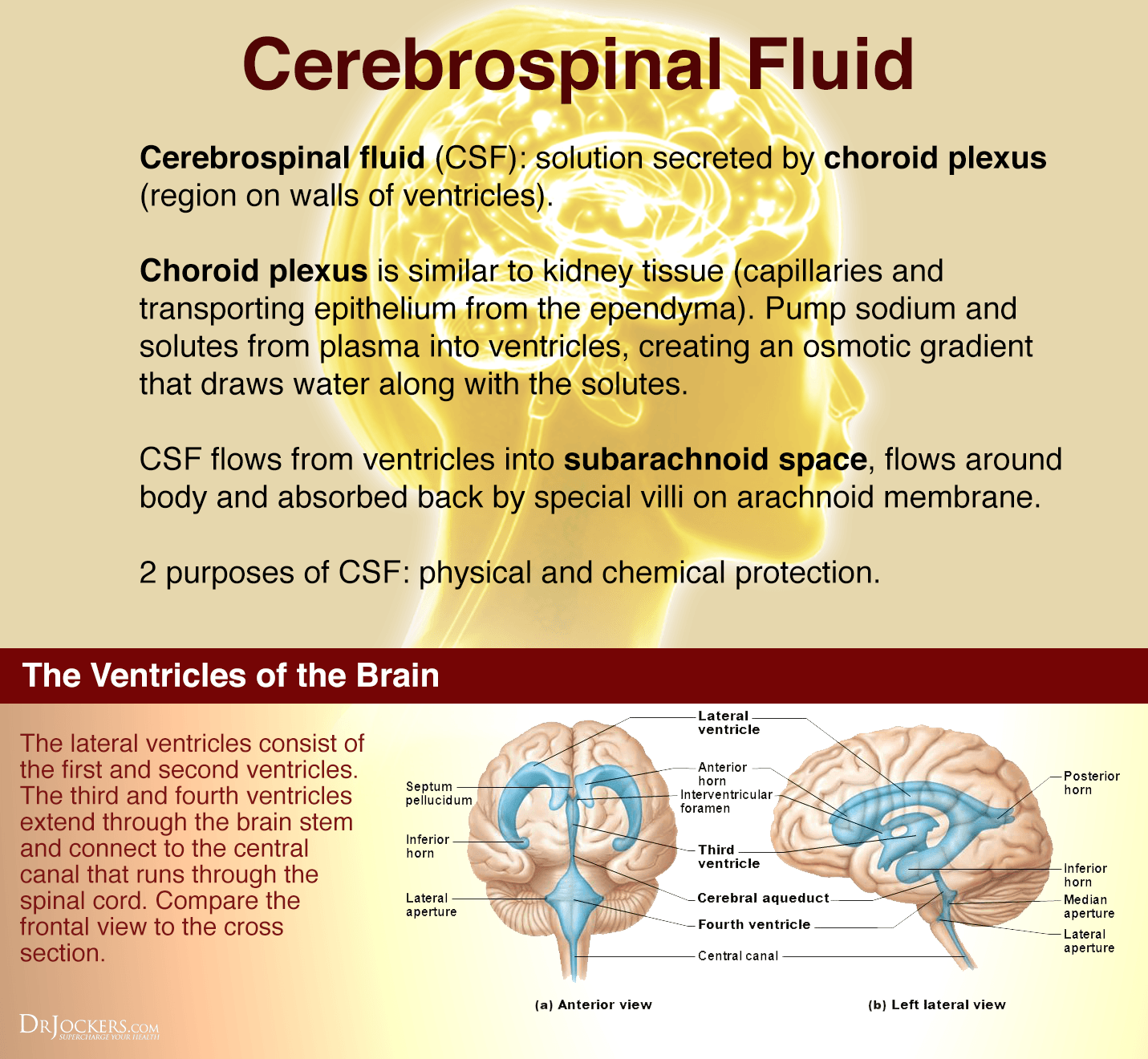
Enhance Cerebrospinal Fluid Flow Naturally
The brain and spinal cord make up the central nervous system (CNS) which is the master control system for the entire body. It sends and receives a complicated frequency of signals with the body that dictate the function of the tissues & cells. The cerebrospinal fluid (CSF) bathes, feeds, & protects the brain and spinal cord (1).
The CSF maintains the electrolytic environment of the central nervous system by cleansing metabolic waste products from the brain and spinal cord. This rinsing process also plays a large role in stabilizing the critical acid-base balance throughout the CNS (2).
It also provides valuable supply of essential nutrients to neuronal and glial cells. CSF also provides a medium to transport hormones, neurotransmitters, releasing factors, and other neuropeptides (3).
CSF Stasis & Vertebral Subluxation:
When the CSF flow becomes stagnant it is classically referred to as CSF stasis. CSF stasis has been associated with vertebral subluxation complex, mechanical tension on the spinal cord, reduced cranial rhythmic impulses & restricted respiratory function. Reduced rates of CSF diffusion through key regions of the brain are a causative factor involved in degenerative disease (4, 5).
The CSF has two major pumps that help to establish healthy flow. The pump at the top of the spine is the occiput bone which makes up the lower portion of the skull. Flexion and extension motions of the occipital bone upon the atlas help to pump CSF through the brain and spinal cord (6, 7).
The other pump is at the bottom of the spine in the sacrum. Flexion and extension of the sacrum is also critical to help pump the CSF.

Sedentary Lifestyles and CSF Stasis:
Sedentary lifestyles and bad postural habits create an environment ripe for CSF stasis in the spinal cord. Sedentary lifestyles create poor core strength and muscle imbalances that lead to chronic subluxation patterns throughout the spine. Sitting for long periods contributes to poor sacral motion and accelerated degenerative changes in the lumbo-pelvic region.
Sedentary lifestyles and poor posture contribute to the formation of forward head posture. Forward head posture is characterized by occipital bone subluxation patterns. The majority of these subluxations have the occiput stuck into extension on the atlas bone with dense ligamentous scar tissue. This is also the most subluxation pattern found in whiplash like traumas.

Corrective Chiropractic Improves CSF:
Healthy CSF flow depends upon a continual approach to minimize subluxation through corrective chiropractic techniques and specific spinal exercises. Chiropractic adjustments are designed to release the ligamentous scar tissue that is locking the region in place (8, 9).
This allows for better neurological function through healthy proprioceptive patterns (10). Additionally, these adjustments help reinforce healthy soft tissue formation in the subluxated regions. This new healthy tissue will allow these regions to have normal, healthy motion.
Wobble Board Exercises:
Wobble board exercises help to restore and reinforce healthy sacral movement and initiate the CSF pump. The wobble board has a very small center of gravity that creates a greater challenge to the coordinating centers of the brain.
This results in increased receptor information from the sacral region that allows a greater degree of range of motion and a further CSF pumping effect. As little as 2-3 minutes of wobble board exercises can have a dramatic effect on the CSF pump.
You can find a wobble board here and a wobble chair here
Repetitive Cervical Traction Exercises:
Repetitive cervical traction exercises puts motion into the occipital region. This motion helps to traction the occiput creating a pressure change which helps facilitate the CSF pump. This allows cleaner CSF to flow into the brain stem region providing fresh oxygen and nutrition.
Additionally, the traction helps stretch chronically tight upper cervical muscles and ligaments and allows new tissue to form with greater elasticity.
It is advisable for individuals to take regular ergonomic breaks to get up and stretch and perform these exercises. This will allow the individual to improve CSF flow which will improve neurotransmitter function, concentration and mental acuity.
You can find the cervical traction unit I use here





How can I buy one of those discs?
Hey Danielle – this is a good one here: https://amzn.to/3lx9qSk
Hi Dr. Jockers, thank you for the article. Are there any gentle exercises/movements that you would recommend to someone diagnosed with CSF spinal leak and consequent intracranial hypotension headache? I have to wait until my procedure and I’m looking for some relief in the meantime from the low pressure headache (brain sag, etc.). Thank you.
IMPRESSIVE THAT YOU WROTE ON THIS “HIDDEN” HEAVILY UNDERSERVED ESSENTIAL TO HEALTH TOPIC.
NICE TO SEE. KUDOS.
CURIOUS, WHEN YOU FIRST DECIDED TO DO THIS.
[> AS I SENSE A BIT OF HIGHER GUIDANCE WAS INVOLVED. <]
– CAN YOU NOTE IF IT WAS ONLY IN THE LAST YEAR OR TWO, OR HAS THIS BEEN A LONG TIME AREA OF KNOWLEDGE TO YOU.
SUPER INTRIGUED FOR THE ANSWER. & GLAD THAT YOU WRITE SUCH EXCEPTIONAL CONTENT.
Thanks for sharing! Yes, very important topic and this article was written about 5 years ago!